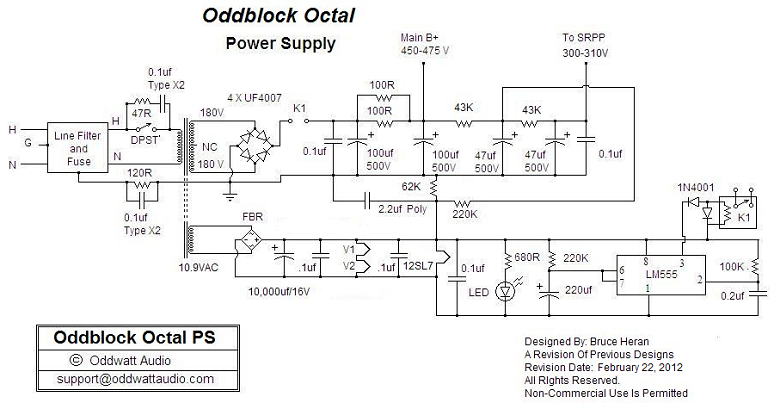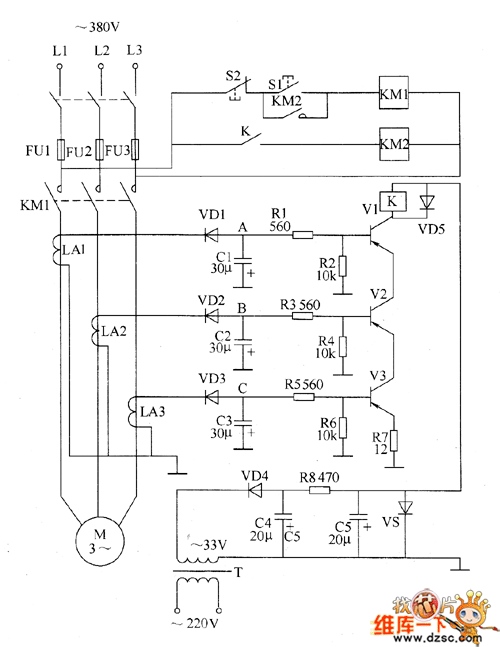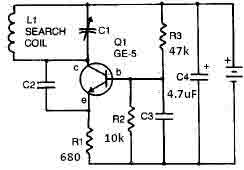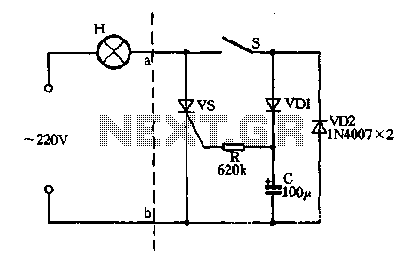
The basic FET amplifier circuit a
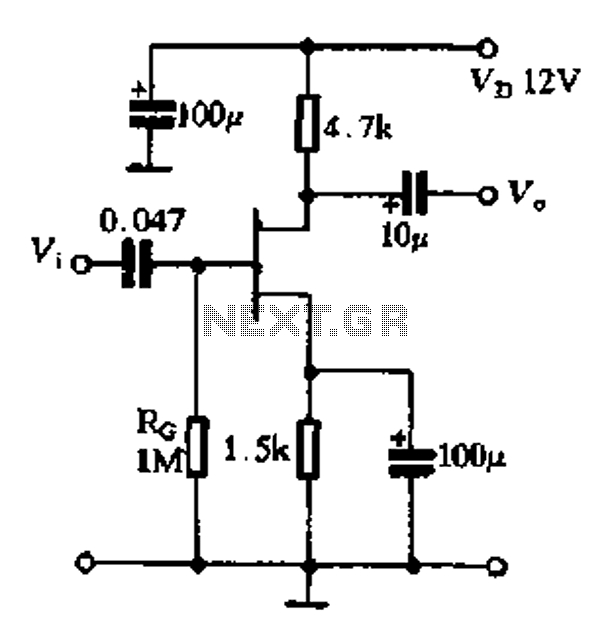
The FET exhibits a high input impedance, a low noise figure, anti-crosstalk capabilities, and good mutual interference performance, making it increasingly utilized in electronic circuits. FET amplifiers can be configured in various ways, including as common source (equivalent to a total emission) amplifiers, common gate (equivalent to a common base) amplifiers, and common drain (equivalent to a common collector) amplifiers. Additionally, they can be combined to form complex circuit configurations such as common source amplifiers, total gate amplifiers, and common drain amplifiers. FET amplifiers share characteristics with corresponding transistor circuits, particularly in configurations such as 8-50 and crystal amplifiers. It is important to note that in FET amplifiers, the high input resistance of the FET gate allows for a design that does not significantly impact the subsequent stage when cascading circuits, thereby simplifying the design and debugging process. However, due to the high input impedance, distributed capacitance, inter-electrode capacitance, and the Miller effect capacitance have a more pronounced effect compared to transistor circuits. Consequently, careful consideration is required in high-frequency and gate circuits, as well as in total common source and common source-drain configurations, to enhance the stability and frequency characteristics of the amplifier. In low-frequency amplifier circuits, the high input impedance of the FET can easily pick up hum and other noise signals, necessitating attention to shielding and related issues.
FETs (Field Effect Transistors) are critical components in modern electronic circuits due to their unique electrical characteristics. The high input impedance of FETs allows them to minimize signal loading on preceding stages, making them ideal for applications where signal integrity is paramount. The low noise figure of FETs further enhances their suitability for sensitive applications, such as RF amplification and audio processing.
The common source configuration is one of the most widely used FET amplifier topologies. In this configuration, the input signal is applied to the gate terminal, and the output is taken from the drain terminal. This setup provides voltage gain and is often employed in signal amplification applications. The common gate configuration, while less common, is beneficial for applications requiring low input capacitance and high-frequency response, as it presents a lower impedance to the source signal. The common drain configuration, also known as a source follower, is used primarily for impedance matching, providing a unity gain while offering a high input impedance.
When designing circuits with FETs, the impact of parasitic capacitances must be taken into account. The Miller effect can significantly affect the frequency response of FET amplifiers, particularly in high-frequency applications. Designers often implement techniques such as negative feedback or additional compensation networks to mitigate these effects and improve stability.
In low-frequency applications, the high input impedance of FETs can make circuits susceptible to noise pickup. Therefore, effective shielding and grounding techniques are essential to minimize interference from external sources. Proper layout design and the use of twisted pair wiring can further enhance the performance of FET-based circuits.
In summary, FET amplifiers offer a versatile solution for various electronic applications, with configurations that cater to specific needs. Understanding their characteristics and the associated design considerations enables engineers to effectively utilize FETs in both low and high-frequency circuit designs.FET having a high input impedance, the noise figure is small, anti-crosstalk, good mutual interference term performance, etc., in the electronic circuits used more and more wid ely. FET amplifier transistor amplifiers to be like that, configured as a common source (equivalent to a total emission) amplifier, a common-gate (equivalent common base) amplifier and a common drain (equivalent to common collector) amplifier. And it can also form a common source common source amplifier, total gate amplifier common source and common drain amplifier source altogether complex circuit form, as 8-50 and crystal corresponding transistor amplifier FET amplifier also has the characteristics of the corresponding 6 is similar to the transistor circuit to be noted that in FET amplifier, since the high input resistance of FET gate, the front and rear stage circuit when the cascade circuit, basically without considering the impact on the post-stage circuit of the preceding stage, thereby simplifying the design and debugging.
However, because of its high input impedance A, distributed capacitance, inter-electrode capacitance and the Miller effect capacitance affect more than the transistor circuits are critical, therefore, still in use in high-frequency circuits and gate circuits and total common source circuit, a total common source-drain circuit peers formula to improve the stability and frequency characteristics of the amplifier. In the low-frequency amplifier circuit, due to the high input impedance FET, easily induced hum and other noise signal, because this process should pay more attention to shielding and other issues.
FETs (Field Effect Transistors) are critical components in modern electronic circuits due to their unique electrical characteristics. The high input impedance of FETs allows them to minimize signal loading on preceding stages, making them ideal for applications where signal integrity is paramount. The low noise figure of FETs further enhances their suitability for sensitive applications, such as RF amplification and audio processing.
The common source configuration is one of the most widely used FET amplifier topologies. In this configuration, the input signal is applied to the gate terminal, and the output is taken from the drain terminal. This setup provides voltage gain and is often employed in signal amplification applications. The common gate configuration, while less common, is beneficial for applications requiring low input capacitance and high-frequency response, as it presents a lower impedance to the source signal. The common drain configuration, also known as a source follower, is used primarily for impedance matching, providing a unity gain while offering a high input impedance.
When designing circuits with FETs, the impact of parasitic capacitances must be taken into account. The Miller effect can significantly affect the frequency response of FET amplifiers, particularly in high-frequency applications. Designers often implement techniques such as negative feedback or additional compensation networks to mitigate these effects and improve stability.
In low-frequency applications, the high input impedance of FETs can make circuits susceptible to noise pickup. Therefore, effective shielding and grounding techniques are essential to minimize interference from external sources. Proper layout design and the use of twisted pair wiring can further enhance the performance of FET-based circuits.
In summary, FET amplifiers offer a versatile solution for various electronic applications, with configurations that cater to specific needs. Understanding their characteristics and the associated design considerations enables engineers to effectively utilize FETs in both low and high-frequency circuit designs.FET having a high input impedance, the noise figure is small, anti-crosstalk, good mutual interference term performance, etc., in the electronic circuits used more and more wid ely. FET amplifier transistor amplifiers to be like that, configured as a common source (equivalent to a total emission) amplifier, a common-gate (equivalent common base) amplifier and a common drain (equivalent to common collector) amplifier. And it can also form a common source common source amplifier, total gate amplifier common source and common drain amplifier source altogether complex circuit form, as 8-50 and crystal corresponding transistor amplifier FET amplifier also has the characteristics of the corresponding 6 is similar to the transistor circuit to be noted that in FET amplifier, since the high input resistance of FET gate, the front and rear stage circuit when the cascade circuit, basically without considering the impact on the post-stage circuit of the preceding stage, thereby simplifying the design and debugging.
However, because of its high input impedance A, distributed capacitance, inter-electrode capacitance and the Miller effect capacitance affect more than the transistor circuits are critical, therefore, still in use in high-frequency circuits and gate circuits and total common source circuit, a total common source-drain circuit peers formula to improve the stability and frequency characteristics of the amplifier. In the low-frequency amplifier circuit, due to the high input impedance FET, easily induced hum and other noise signal, because this process should pay more attention to shielding and other issues.
Warning: include(partials/cookie-banner.php): Failed to open stream: Permission denied in /var/www/html/nextgr/view-circuit.php on line 713
Warning: include(): Failed opening 'partials/cookie-banner.php' for inclusion (include_path='.:/usr/share/php') in /var/www/html/nextgr/view-circuit.php on line 713
